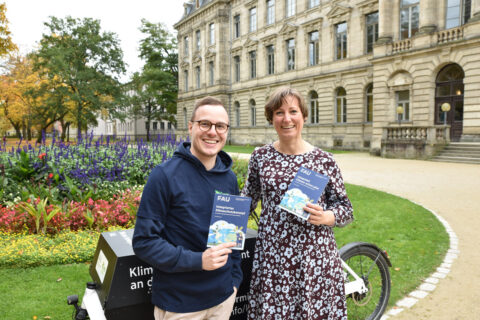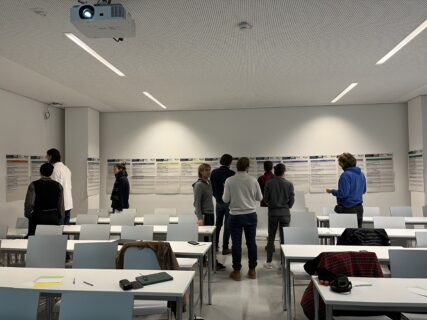Klimaschutzkonzept – Was ist das?
Aufbau, Inhalt & Nutzen
Im Rahmen der Erstellung des Klimaschutzkonzeptes der FAU wurden eine Ist-Analyse sowie eine ganzheitliche Energie- und Treibhausgasbilanzierung der Universität durchgeführt, um zu ermitteln, in welchen Bereichen die FAU wie viele Treibhausgasemissionen (THG-Emissionen) verursacht. Auf dieser Basis erfolgte eine Analyse von Potenzialen zur Minderung der THG-Emissionen, die Berechnung verschiedener Szenarien und die Definition von Treibhausgas-Minderungszielen bzw. eines angestrebten Reduktionspfads. Unter Einbeziehung aller relevanten Akteursgruppen wurde außerdem ein Maßnahmenkatalog mit kurz- (bis drei Jahre), mittel- (drei bis sieben Jahre) und langfristigen (mehr als sieben Jahre) Maßnahmen erarbeitet, durch dessen Umsetzung die Emissionen in den kommenden Jahren gemäß des Reduktionspfads verringert werden sollen. In einer Verstetigungs- und Kommunikationsstrategie sowie einem Controlling-Konzept wurden abschließend Schritte festgelegt, durch die sowohl eine dauerhafte Implementierung des Klimaschutzmanagements an der FAU, als auch eine regelmäßige Überprüfung der Wirksamkeit der Klimaschutzaktivitäten gewährleistet werden soll.

Teamleistung Klimaschutzkonzept
Eine Vielzahl an internen und externen Stellen war im Laufe der knapp 18 Monate bis zur Veröffentlichung an der Erstellung des Klimaschutzkonzepts der FAU beteiligt:
- Klimaschutzmanagement der FAU: Koordination und Organisation aller nötigen Arbeitsschritte sowie der Beteiligung aller relevanten Akteursgruppen
- HIS-Insitut für Hochschulentwicklung (HIS-HE): Beratung und Unterstützung des Klimaschutzmanagements bei der Erstellung des Klimaschutzkonzeptes
- Bundesministerium für Wirtschaft und Klimaschutz und die Nationale Klimaschutzinitiative: Förderung der Erstellung des Klimaschutzkonzeptes unter dem Titel „Mit Vielfalt, Innovation und Leidenschaft zur Erstellung eines integrierten Klimaschutzkonzeptes für die Friedrich-Alexander-Universität Erlangen-Nürnberg“
- Steuerungsgruppe: Treffen zentraler Entscheidungen während der Konzepterstellung, Formulierung einer Empfehlung für den Beschluss der Universitätsleitung zu den Reduktionszielen und der Zusammenstellung des Maßnahmenkatalogs
- Studierende und Mitarbeitende: Einreichen von Vorschlägen für Klimaschutzmaßnahmen an der FAU, Bewertung der Vorschläge in Workshops
- Dekane, Mitglieder der Kommissionen, Referats- und Sachgebietsleitungen: Beurteilung der Klimaschutzmaßnahmen hinsichtlich Realisierbarkeit etc.






